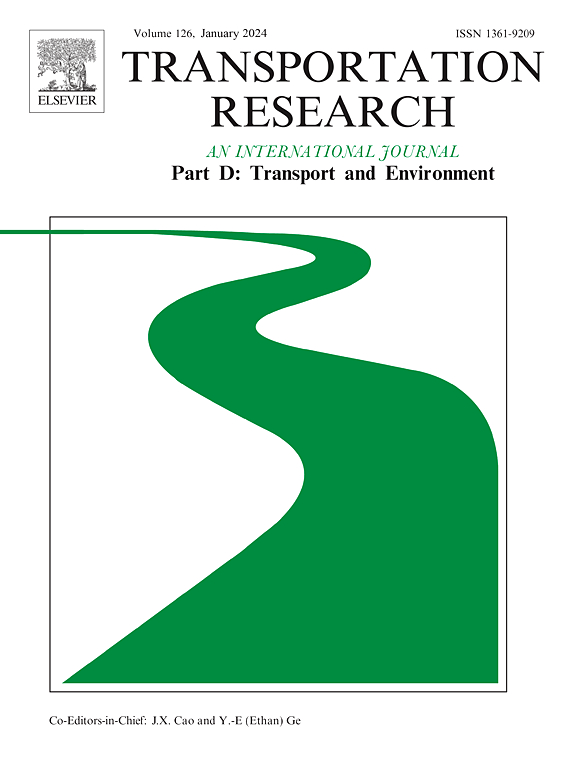Machine learning in spatiotemporal PM2.5 hotspots analysis for better targeted mitigation strategies
IF 7.7
1区 工程技术
Q1 ENVIRONMENTAL STUDIES
Transportation Research Part D-transport and Environment
Pub Date : 2025-09-27
DOI:10.1016/j.trd.2025.105017
引用次数: 0
Abstract
Rapid urbanization has driven significant air pollution, posing serious health risks, especially to marginalized communities. Despite ongoing control efforts, gaps remain in designing effective mitigation strategies. This study uses machine learning for spatiotemporal analysis of PM2.5 hotspots in New York City, revealing a 10–25 % decline in concentrations from 2010 to 2019 but identifying 173 consistent, 62 emerging, and 27 declining hotspots. Among tested models, AutoGluon achieved 93 % accuracy and 88 % weighted F1 score, outperforming CatBoost, XGBoost, and Random Forest. Temporal features contributed 13.5 % of predictive power, while spatial features, like road networks (1.8 %), vehicle operations (0.7 %), and land use (0.7 %), collectively accounted for 3.2 %. Scenario analysis showed traffic volume restrictions and truck prohibitions effectively reduced pollution, with congestion pricing proving most impactful across eight hotspot regions. Equity-focused scenarios highlighted improvements in 15 areas under congestion pricing and 19 with odd–even license plate access. This framework offers actionable insights for targeted, equitable pollution control.

机器学习在PM2.5时空热点分析中的应用,以提供更有针对性的缓解策略
快速城市化造成了严重的空气污染,对健康构成严重威胁,特别是对边缘化社区。尽管正在进行控制努力,但在设计有效的缓解战略方面仍然存在差距。该研究使用机器学习对纽约市的PM2.5热点进行时空分析,揭示了2010年至2019年浓度下降10 - 25%,但确定了173个稳定热点,62个新兴热点和27个下降热点。在测试的模型中,AutoGluon达到了93%的准确率和88%的F1加权得分,优于CatBoost、XGBoost和Random Forest。时间特征贡献了13.5%的预测能力,而空间特征,如道路网络(1.8%)、车辆运行(0.7%)和土地利用(0.7%),总共占3.2%。情景分析显示,交通流量限制和货车禁行有效地减少了污染,拥堵收费在八个热点地区被证明是最有效的。以股票为重点的场景强调了15个拥堵收费地区和19个单双号通行地区的改善。这一框架为有针对性的、公平的污染控制提供了可行的见解。
本文章由计算机程序翻译,如有差异,请以英文原文为准。
求助全文
约1分钟内获得全文
求助全文
来源期刊
CiteScore
14.40
自引率
9.20%
发文量
314
审稿时长
39 days
期刊介绍:
Transportation Research Part D: Transport and Environment focuses on original research exploring the environmental impacts of transportation, policy responses to these impacts, and their implications for transportation system design, planning, and management. The journal comprehensively covers the interaction between transportation and the environment, ranging from local effects on specific geographical areas to global implications such as natural resource depletion and atmospheric pollution.
We welcome research papers across all transportation modes, including maritime, air, and land transportation, assessing their environmental impacts broadly. Papers addressing both mobile aspects and transportation infrastructure are considered. The journal prioritizes empirical findings and policy responses of regulatory, planning, technical, or fiscal nature. Articles are policy-driven, accessible, and applicable to readers from diverse disciplines, emphasizing relevance and practicality. We encourage interdisciplinary submissions and welcome contributions from economically developing and advanced countries alike, reflecting our international orientation.

 求助内容:
求助内容: 应助结果提醒方式:
应助结果提醒方式:


